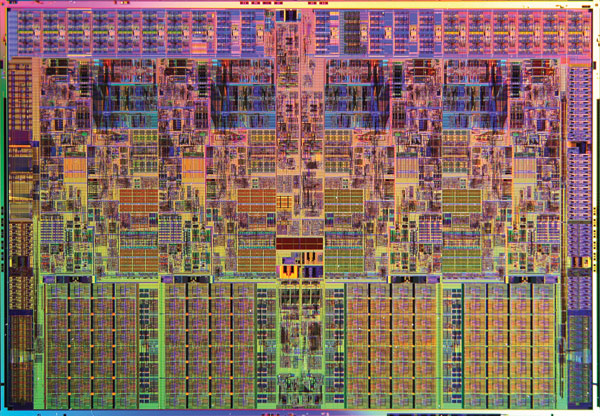Mobile Computing is Transforming the Microprocessor Industry

Intel’s family of Core i7 chips, which are among today’s most powerful desktop processors, have as many as 774 million transistors, with channels just 100 silicon atoms across. The chips have four to six 64-bit computational cores that run at clock speeds of up to 3.3 gigahertz. In volume, one costs about $1,000; correcting for inflation, that’s about what the first commercial microprocessor, the Intel 4004, cost in 1971. Incredible advances in silicon technology over the last 40 years have made computers ubiquitous in homes and offices.
Microprocessors have also become commonplace in mobile devices such as cell phones, but until recently there was a vast gulf between the simple processors embedded in such things and their more complex cousins in personal computers. In the last few years, however, mobile processors have vastly increased in capability. Today, a smart phone might have a one-gigahertz processor and gigabytes of data storage, roughly equivalent to the computational power that a high-end desktop computer had in 2000. The implications are immense. The multimedia capabilities of modern cell phones are enabling millions of people in poor countries to access the Internet. And new mobile applications, such as location-based services and augmented reality, are moving into the mainstream.
The surging demand for mobile computing power is changing the way the semiconductor industry thinks about chips (see “Mobile Chips Threaten High-Performance Manufacturers”). The constraints of batteries mean that performance per watt is replacing processing power as the metric that chip makers like to brag about. And the emphasis on networking and multimedia applications in mobile devices is moving manufacturers’ focus from general-purpose processors to those that have specialized circuitry for tasks such as handling audio and video (see “Designing for Mobility”). Manufacturers are also working out how to accommodate the limitations of silicon, which are making it harder and harder to deliver ever more processing power at an ever lower price (see “The High Cost of Upholding Moore’s Law”). Yet some of the biggest performance gains we’ll see in the next few years won’t come from new ways of making chips but from new ways of programming them (see “Multicore Processors Create Software Headaches”).
Keep Reading
Most Popular
Large language models can do jaw-dropping things. But nobody knows exactly why.
And that's a problem. Figuring it out is one of the biggest scientific puzzles of our time and a crucial step towards controlling more powerful future models.
How scientists traced a mysterious covid case back to six toilets
When wastewater surveillance turns into a hunt for a single infected individual, the ethics get tricky.
The problem with plug-in hybrids? Their drivers.
Plug-in hybrids are often sold as a transition to EVs, but new data from Europe shows we’re still underestimating the emissions they produce.
Stay connected
Get the latest updates from
MIT Technology Review
Discover special offers, top stories, upcoming events, and more.